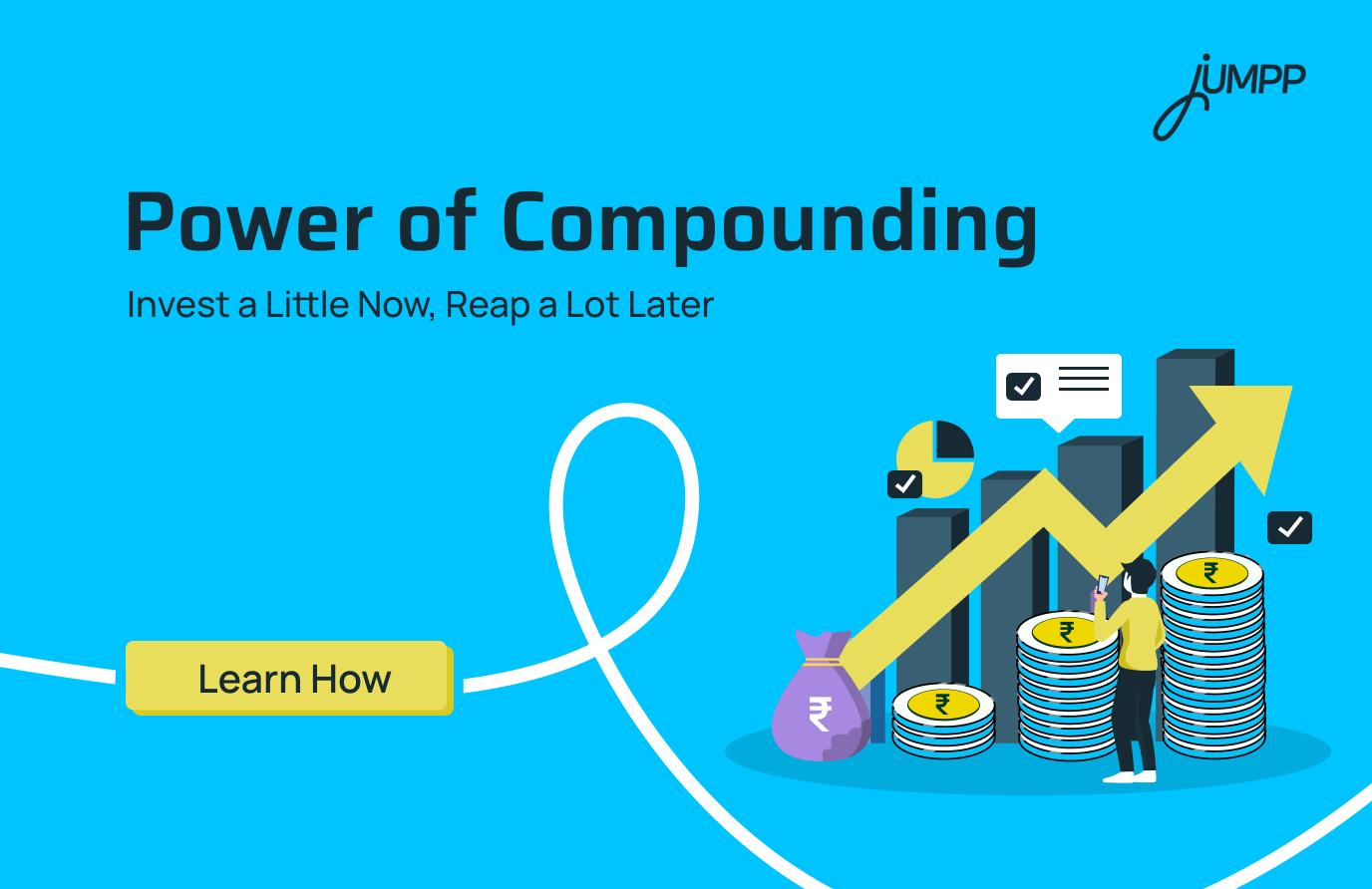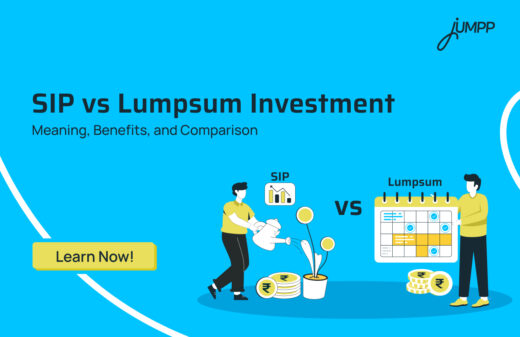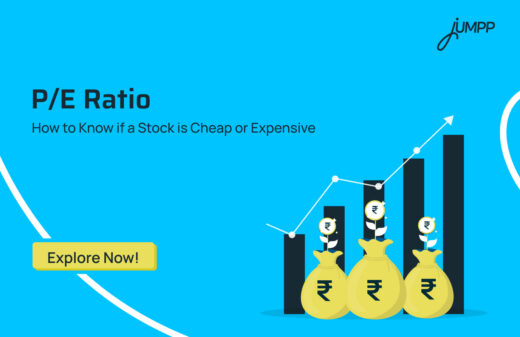Start Small, Let the Power of Compounding Do the Work: Here’s How

Most people still believe that saving money alone is enough to build long-term wealth and ensure their financial security. But here’s the truth—your savings lose value every day due to inflation. The only way to truly grow your money is through the power of compounding!
Did you know that investing just ₹1,000 per month at a 12% annual return could grow to over ₹1 crore in 30 years?
That’s how compounding works—it rewards patience and consistency.
Ready to leap forward with this powerful wealth-building secret?
It’s time to begin with us—let’s learn about saving and power of compounding!
What is Compounding?
Compounding is the process of earning interest not just on your initial investment but also on the interest that keeps getting added over time. This works via compound interest.
It’s the key factor that makes compounding so powerful.
With compound interest, you earn interest on both your initial investment and the interest that has already accumulated.
Let us say that you save ₹1,000 and earn 10% interest per year.
- Year 1: You earn ₹100 in interest, so your total becomes ₹1,100.
- Year 2: Now, you earn 10% on ₹1,100 (not just ₹1,000). That means you get ₹110, making your total ₹1,210.
- Year 3: You earn 10% on ₹1,210, which is ₹121, making your total ₹1,331.
Over time, your money keeps growing at a faster rate because you are earning interest on interest!
This is why compounding is one of the most powerful ways to build wealth. The earlier you start, the more your money grows!
If you invest ₹10,000 in a savings account with an interest rate of 5% per year, after one year, you will earn ₹500 in interest.
The next year, the interest is calculated not just on ₹10,000 but on ₹10,500 (the principal + the first year’s interest). This effect continues year after year. This is the real power of compounding!
Why is Compounding Powerful?
This is because:
1. Money Multiplies Over Time – Even a small investment today can turn into a large sum in the future.
2. Works Best with Time – The longer you invest, the bigger your returns.
3. No Extra Effort Needed – Your money grows on its own, just like the mango farm.
4. Makes Saving Exciting – Seeing your savings grow encourages better financial habits.
What is Compound Interest
Compound interest is the interest you earn not only on your original money (called the principal) but also on the interest that gets added over time. This means your investment grows faster because you keep earning interest on a larger amount.
Compound Interest Formula
The formula for compound interest is:
Compound Interest = P × [(1 + i)^n – 1]
Where:
- P is the principal amount
- i is the interest rate per period
- n is the number of compounding periods
This formula helps calculate how much your investment will grow over time.
How Does Compounding Work?
Compounding works by reinvesting the returns you earn so your money keeps growing over time.
The longer you let it grow, the bigger the impact!
Types of Compounding
Interest can be compounded at different intervals:
- Daily Compounding – Interest is added every day.
- Quarterly Compounding – Interest is added every three months.
- Half-Yearly Compounding – Interest is added twice a year.
- Annual Compounding – Interest is added once a year.
The more frequently interest is compounded, the higher the future value of your investment.
The more often interest is added, the more you earn!
Let us understand this with a power of compounding example:
1️. You Invest Money – Let’s say you invest ₹10,000 in a mutual fund or fixed deposit.
2️. You Earn Returns – If the interest rate is 10% per year, you earn ₹1,000 in the first year.
3️. Your Returns Get Added to Your Investment – Now, instead of ₹10,000, you have ₹11,000.
4️. You Earn Interest on the New Amount – In the second year, you earn 10% on ₹11,000, which is ₹1,100.
5️. This Cycle Keeps Repeating – Every year, you earn returns on a larger amount.
Key Factors That Make Compounding Powerful:
Time – The earlier you start, the bigger your returns.
Reinvestment – Keep your money invested instead of withdrawing it.
Higher Returns – A higher interest rate grows your money even faster.
Compounding Investment
When you invest in assets like mutual funds, stocks, fixed deposits, or bonds, your returns (profits, dividends, or interest) get added to your original investment. Over time, you start earning returns not just on your initial amount but also on the accumulated earnings.
How Does Compounding Work in Mutual Funds?
When you invest in mutual funds, compounding plays a key role.
Mutual funds generally offer higher returns than traditional savings accounts, and when those returns are reinvested, thus begins the power of compounding.
This is how compounding in mutual funds can accelerate your investment growth over time.
Suppose you invest ₹1,00,000 in a mutual fund that offers an annual return of 12%.
In the first year, you’ll earn ₹12,000 in interest.
However, in the second year, the return will be calculated at ₹1,12,000 (the initial ₹1,00,000 plus ₹12,000 interest).
As time goes on, the returns keep growing.
Let us say that you invest ₹50,000 in a mutual fund that gives 12% annual returns:
- Year 1: You earn ₹6,000 (12% of ₹50,000), total becomes ₹56,000.
- Year 2: You earn 12% on ₹56,000, which is ₹6,720, total becomes ₹62,720.
- Year 3: You earn 12% on ₹62,720, which is ₹7,526, total becomes ₹70,246.
As you can see, your earnings keep increasing every year!
If you leave it invested for 20-30 years, your wealth multiplies exponentially.
Some of the Best Investments for Compounding Growth
Mutual Funds (SIP) – Returns are reinvested to maximise growth.
Stocks (Long-Term Holding) – Stocks that grow over time reinvest profits, increasing your wealth.
Fixed Deposits (FDs) – Compounded interest helps your money grow.
Public Provident Fund (PPF) – Government-backed with tax benefits and compounding interest.
To leverage the power of compounding to its fullest, you need to start investing early and regularly.
Saving and the Power of Compounding: It’s Not Just About Investing
Compounding isn’t only for investments—it can also help grow your savings. When you deposit money in a high-interest savings account or fixed deposit (FD), the interest on your savings compounds over time, leading to larger payouts.
The savings and power of compounding work together to create a strong financial foundation. While investments typically offer higher returns, using compounding with savings can still yield significant growth, especially if you are consistent with deposits.
If you save ₹10,000 in a fixed deposit at 6% annual interest, after one year, you will earn ₹600. The next year, your interest will be calculated at ₹10,600, and so on. Over time, your savings grow faster than if you had simply left the money in a regular savings account.
Simple Interest vs Compound Interest
| Basis | Simple Interest | Compound Interest |
| Meaning | Interest is calculated only on the original principal amount. | Interest is calculated on the principal and accumulated interest. |
| Growth | Grows steadily over time. | Grows faster due to the compounding effect. |
| Formula | SI = (P × R × T) / 100 | CI = P × [(1 + R/100)^T – 1] |
| Interest Earned On | Principal only. | Principal + Interest from previous periods. |
| Returns | Lower compared to compound interest over long term. | Higher returns in the long run. |
| Used In | Short-term loans, car loans, personal loans. | Long-term investments, savings accounts, FDs, PPF. |
Advantages of Compound Interest
The advantages of compound interest are numerous. Some of the key benefits include:
- As mentioned earlier, the longer you leave your money to compound, the more it grows. This is the primary advantage of compound interest.
- Once your money is invested, you don’t need to actively manage it. The interest just keeps accumulating.
- Compound interest helps generate passive income through reinvestment, which can be a significant source of financial freedom.
Investment Strategies Using Compounding
Compounding can help you build wealth, but you need the right strategies. Here’s how you can make the most of it:
1. Start Early
The earlier you start investing, the better your returns. Even a delay of a few years can make a big difference.
- If Ramesh invests ₹5,000 per month at a 10% annual return from age 25, he will have around ₹1.9 crores by the time he is 60.
- If Suresh starts the same investment at 35, he will have only ₹75 lakhs by 60.
The lesson?
Start as early as possible!
2. Be Consistent
Investing regularly helps you take advantage of compounding.
- If you invest ₹2,000 every month in a mutual fund, even with just 12% returns, your investment will grow to ₹50 lakhs in 30 years.
3. Reinvest the Returns
Don’t withdraw the interest or profit; let it stay invested. This way, it will keep growing.
- If you put ₹1 lakh in a fixed deposit at 7% and reinvest the interest, in 20 years, you’ll have ₹3.87 lakhs instead of just ₹2 lakhs (if you withdraw the interest every year).
4. Choose the Right Investment Options
Some investments offer better-compounding benefits, such as:
- Mutual Funds (SIP) – Best for long-term wealth creation.
- PPF (Public Provident Fund) – Great for safe, long-term savings.
- Stock Market – Can offer high growth if you stay invested for years.
- Fixed Deposits with Compound Interest – Safe but lower returns.
Note: These examples are for illustration purposes only. Actual stock market rates and returns can vary based on market conditions and other factors. Always do your own research or consult a financial advisor before making any investment decisions.
Ready to grow your wealth? Explore smarter investments with jUMPP.
How to Calculate Compound Interest?
You can use this simple compound interest formula in your day-to-day life decisions:
A = P (1 + r/n)^(nt)
Where:
- A = Final Amount
- P = Initial Investment
- r = Annual Interest Rate (in decimal)
- n = Number of times interest is compounded per year
- t = Number of years
If you invest ₹1 lakh at 10% annual interest, compounded yearly for 10 years:
A = 1,00,000 (1 + 0.10/1)^(1×10) A = ₹2,59,374
So, your money grows to ₹2.59 lakhs in 10 years without any extra investment!
To make it easier, you can use online compound interest calculators. Just enter your investment amount, interest rate, and duration, and they will show you how much your money can grow.
Final Thoughts
Compounding is a powerful tool for building wealth. The earlier you start, the better results you get. Whether it’s SIPs, PPF, stocks, or FDs, investing regularly and reinvesting your returns can help you achieve your financial goals effortlessly. So, start today and let the power of compounding do its magic!
Power of Compounding: FAQs
Compounding means earning interest on your interest. It helps your money grow faster over time.
The 8-4-3 rule shows how an investment grows through compounding: 8 years of steady growth, followed by 4 years of doubling, and 3 years of exponential doubling. It shows how compounding accelerates returns over time.
The “Rule of 72” helps estimate how long it takes for an investment to double by dividing 72 by the annual interest rate. It offers a quick way to understand compound interest growth.
Money compounding means your money earns interest, and that interest earns even more interest, making your savings grow quickly.
You can get 10% interest by investing in high-yield savings accounts, stocks, or mutual funds that offer this return.
The fastest way to compound money is by investing in assets that grow quickly, like stocks or real estate, and leaving the returns to grow over time.






